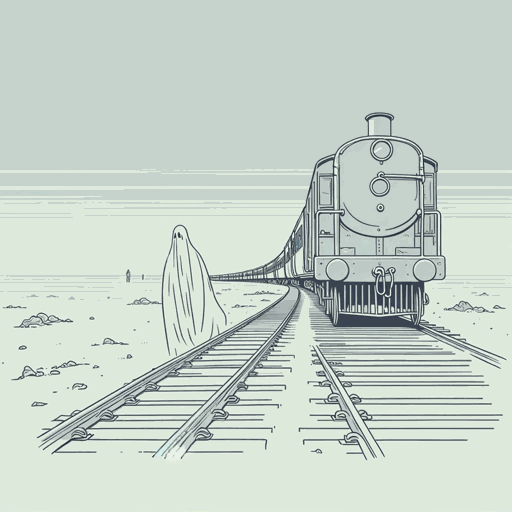39 pages • 1 hour read
Khushwant SinghTrain to Pakistan
Fiction | Novel | Adult | Published in 1956A modern alternative to SparkNotes and CliffsNotes, SuperSummary offers high-quality Study Guides with detailed chapter summaries and analysis of major themes, characters, and more.
Summary and Study Guide
Overview
Train to Pakistan is a 1956 historical novel by Indian novelist Khushwant Singh. Set during the 1947 partition of India that created the nations of Pakistan and India, it focuses on the way partition impacted the people on the ground. Focusing on the lives of ordinary citizens as they were torn from their homes, Train to Pakistan brings a human dimension to one of the bloodiest periods in the history of the two countries.
Before the 1947 partition, Hindus, Muslims, and Sikhs lived side by side, despite occasional conflict and violence. Partition set such religious and cultural differences in stone and families were forced to abandon their homes, moving to areas that were deemed safe for those of their religious belief. However, the resettlement process itself was filled with danger as extremist elements sought to take advantage of the chaos. These ad hoc evacuations took place on foot, via cart, and on crowded trains. As these refugees attempted to escape the violence, they would soon become caught up in the ongoing civil war between Hindus and Muslims.
Although many refugees sought safety in the countryside, far away from the center of the violence, rural areas were filled with danger as well, as tribal gangs targeted refugees. In all, it is estimated that almost ten million people were relocated during the conflict. Of those, more than a million were killed in the violence that erupted during the resettlement process. Through this all, the trains continued to run, shuttling refugees along a dangerous path. The trains became targets themselves, as both sides in the civil war saw them as an effective way of killing large numbers of refugees. They became known as ghost trains, or funeral trains.
Many villages, such as Mano Majra where the majority of the novel takes place, relied on supply trains, and the trains’ arrivals and departures structured daily life in the villages. As the war progressed, the trains became more and more irregular, and were often filled with more refugees than the small villages could handle. As the chaos in the center of the country increasingly reached the rural villages, fear crept into the villages and touched every aspect of their lives.
In Mano Majra, life was still fairly peaceful, and the village was religiously diverse with a population of Hindus, Muslims, Sikhs, and Christians. For hundreds of years, the village existed in a spirit of cooperation, and the people relied on each other for their survival. The religious conflict taking place in the urban centers seemed a million miles away until the arrival of the first ghost train. The train carries many corpses, and the villagers are overcome is captivated by horror. A second train arrives soon afterwards, and with it more changes for the village. They are soon ordered by soldiers to help bury the dead before the start of monsoon season.
Soon, the fragile peace among religions in the village is broken as the Muslim citizens in the village are ordered to evacuate. Stripped of their belongings, families that have lived in Mano Majra for generations are exiled with only the possessions they can carry. Although the Muslims suffer the brunt of the soldiers’ authority, the soldiers have plans for the Sikh and Hindu populations as well. An attack is planned on the next train to Pakistan, and the Hindu and Sikh citizens are drafted into it. The soldiers will strafe the train with gunfire, and when people flee the train the villagers will attack them and finish them off.
The horror of this plan is emphasized when the villagers realize that this next train will not be carrying Muslim citizens, but people from their village. They are being ordered to attack their own friends and neighbors. One man, a Sikh thief named Jugga, is horrified to realize that his bride to be, a Muslim woman, will be on the train as well. In the face of this violent attack, the citizens of Mano Majra are forced to confront the beginnings of ethnic cleansing in their nation. Jugga, a man who has been complicit in violence in the past, is forced to decide if this is the time to take a stand, or if violence is now inevitable. The crisis of faith he experiences as he struggles to rise above the current climate of hatred and stand up for his friends and neighbors is the crux of Train to Pakistan.
Train to Pakistan remains one of the seminal works dealing with the partition of India and explores themes of love, religion, and alliance. Singh paints a picture of a village where no one is either pure evil or pure good. Jugga—a deeply flawed man—represents the idea that during periods of religious and political conflict,, people can choose to walk a different path, even if the cost is high.

